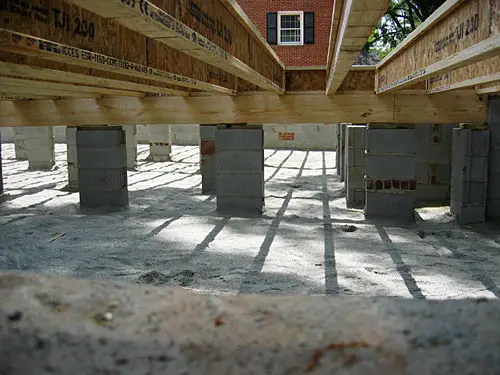When building a house, choosing the right kind of foundation is perhaps the first decision that homeowners have to struggle with. There are many options for the right foundation depending upon the climate, the soil types, as well as, the elevation of the ground. For good reasons, crawl space foundation is one of the popular choices to build a house upon.
What is a crawl space foundation?
In very simple words, a crawl space is a kind of foundation that lifts the house off the ground to about 2 feet. The footing is often made with cement and there are many stem walls extending from the footing. These stem walls support the whole house and thus, lays its foundation. Sometimes, another system called the pier and beam are used instead of the stem walls to support the house. To add more attraction to the crawl space foundation, many homeowners use cinder blocks with the bricks facing outwards.

How is crawl space foundation different from other kinds of foundations?
There are two other foundations apart from the crawl space, namely the basement foundation and the slab foundation.
Basement Vs Crawl Space foundation
A basement foundation is the one in which the ground is first dug up and then a basement is created. The house rests on this basement. A basement, although providing additional functionality to the house, is very expensive and labor intensive. Additional time is also required for the concrete to set.
A crawl space foundation on the other hand can be built really quickly and does not require digging up of the ground. This makes it an ideal choice for areas with slopes or ground, which cannot be dug up easily.
Slab Vs Crawl Space foundation
A slab foundation is a kind of foundation in which, a thick slab of concrete is first set on the ground. The house is then set over this slab. The plumbing, air conditioning as well as the heating system is set in the slab itself. The construction and setting up of a slab foundation is a very easy and inexpensive affair. However, care should be taken when choosing it over other kinds of foundations.
A slab foundation doesn’t support any access to plumbing, ventilating or air conditioning systems. Therefore, at the time of repair, the whole slab is removed. This process is quite expensive and causes undue liability on the homeowner.
Also, slab foundations are prone to cracking, being uneven or having spots. Since, they are inexpensive, they bring down the resale value of a house.
A crawl space foundation on the other hand, is made in such a way that the ventilation, air conditioning and plumbing system are easily accessible. This ease of access is really helpful at times of repair or renewal. Also, the crawlspace does not lead to any uneven or cracked floors.
Other advantages of crawl space foundation
- Value: The crawl space foundation is very low on price and hence can be made without causing a dent in the budget.
- Ideal for uneven ground: Places which have an uneven elevation or have slopes pose no danger to the crawl space foundation. The foundation is adjusted according to the slope and the house is raised accordingly.
- Protection from dampness and infestation: One of the chief advantages of the crawl space foundation is that since the house is elevated from the ground, it is saved from termite infestations as well as any problems of damp ground.
Disadvantages of the crawl space foundation
There are a few disadvantages of the crawl space foundation that a homeowner must take into account:
- Dampness: The one problem that comes with the crawl space foundation is dampness. Many times, water flow from the gutter towards the crawl space results in excessive damage, which damage the woodwork as well as the floors.
- Need for regular check up: Crawl space foundations that are not insulated properly tend to accumulate moisture, resulting in the unwanted growth of molds, fungi and other pests. To deal with this situation, a regular check is necessary, especially in humid climates.
- Inspection can be difficult if the crawl space is not high enough: Sometimes, homeowners opt for a crawl space which is low in height, forgetting that they will have to get under these spaces to inspect their house. Ideally, a crawl space foundation should be 18 inches or higher so that a person, usually a repairman, can get under it and do the work easily.
